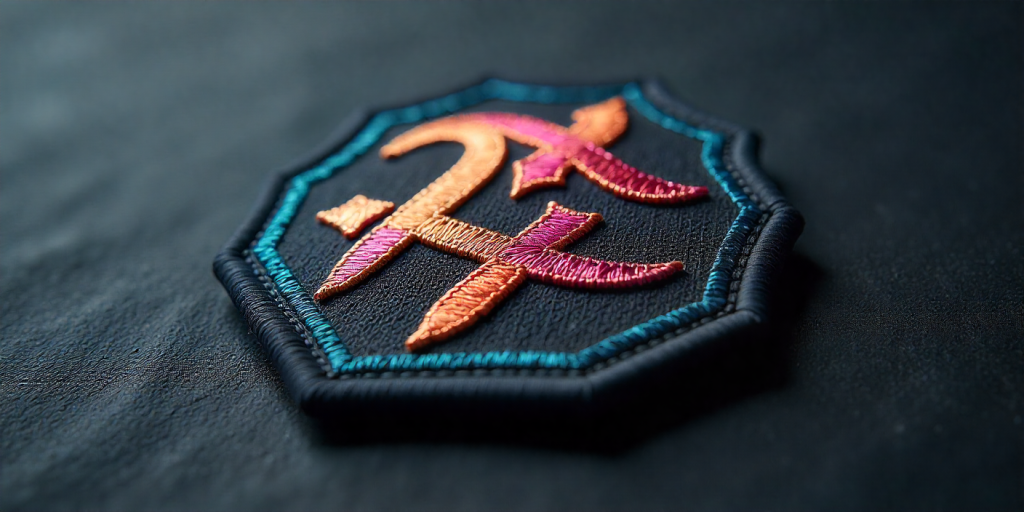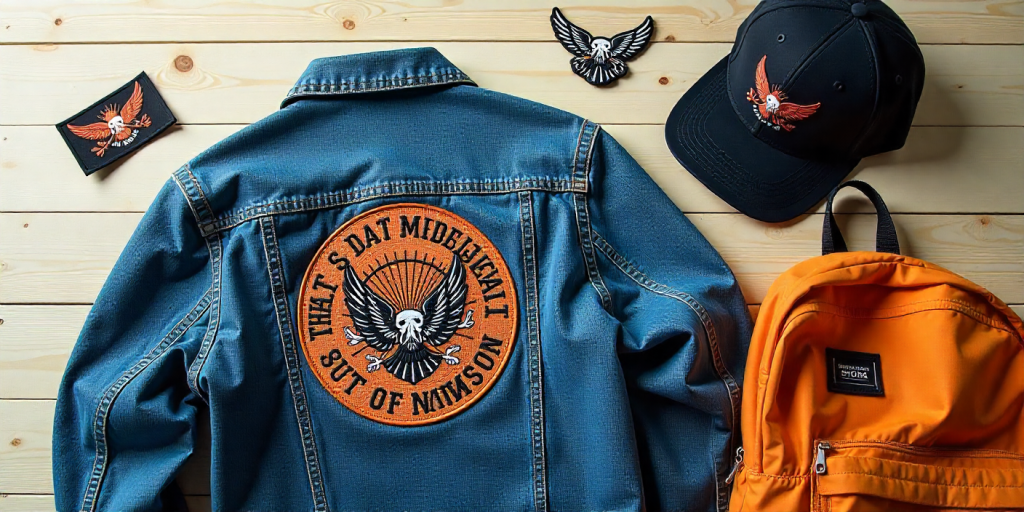As a clothing brand owner, selecting the right type of label can significantly impact your product’s perceived quality, durability, and overall brand identity. The debate between custom woven labels and heat transfer labels continues to evolve with new technologies and consumer preferences. This comprehensive guide will help you make an informed decision for your fashion line.
Understanding the Basics: What Are They?
Custom Woven Labels
Woven labels are created by weaving threads together using specialized looms, resulting in a premium, textured finish. These labels are known for their:
- Professional luxury appearance
- Excellent durability
- Traditional craftsmanship appeal
- Long-lasting readability
Popular applications: High-end fashion, denim brands, heritage clothing lines, and premium sportswear.
Heat Transfer Labels
Heat transfer labels involve printing designs onto special paper and then heat-pressing them directly onto garments. Key characteristics include:

- Smooth, seamless application
- Modern, minimalist look
- Flexibility in design complexity
- Quick production times
Popular applications: Activewear, promotional items, budget-friendly fashion, and technical garments.
Key Comparison Factors for Brand Owners
1. Durability and Longevity
Woven labels typically outperform heat transfers in long-term durability. The woven threads maintain their integrity through repeated washing, making them ideal for items that require frequent cleaning.
Long-tail keyword: “long-lasting woven labels for frequent washing”
Heat transfer labels can crack or fade over time, especially if not applied correctly or when exposed to high-temperature washing.
2. Cost Considerations
For small batches, heat transfer labels often have lower upfront costs. However, for larger quantities, custom woven labels become more cost-effective due to economies of scale.
Long-tail keyword: “cost-effective custom labels for clothing brands”
3. Design Flexibility
Heat transfers excel with complex designs, gradients, and photographic elements. Woven labels work best with simpler designs, text, and solid color blocks.
4. Comfort and Feel
Many consumers prefer the softness of heat transfer labels against the skin, while others appreciate the traditional feel of woven labels as a mark of quality.
Industry-Specific Recommendations
Best for Luxury Brands: Woven Labels
If your brand positioning emphasizes craftsmanship and heritage, woven labels reinforce these values effectively. The tactile experience communicates quality before customers even try on the garment.
Best for Activewear: Heat Transfer Labels
For sportswear and performance apparel, heat transfer labels provide the smooth, irritation-free surface that active consumers prefer.
Best for Children’s Clothing: Heat Transfer Labels
The soft, seamless nature of heat transfers makes them ideal for children’s sensitive skin and ensures no scratchy edges.
Making the Right Choice: Decision Matrix
| Factor | Woven Labels | Heat Transfer Labels |
|---|---|---|
| Durability | ⭐⭐⭐⭐⭐ | ⭐⭐⭐ |
| Design Complexity | ⭐⭐⭐ | ⭐⭐⭐⭐⭐ |
| Cost (Small Runs) | ⭐⭐⭐ | ⭐⭐⭐⭐⭐ |
| Premium Feel | ⭐⭐⭐⭐⭐ | ⭐⭐⭐ |
| Comfort | ⭐⭐⭐ | ⭐⭐⭐⭐⭐ |
| Production Speed | ⭐⭐⭐ | ⭐⭐⭐⭐⭐ |
Hybrid Solutions: When to Consider Both
Some sophisticated brands use both technologies strategically:
- Woven labels for brand identification on necklines
- Heat transfer labels for care instructions and size information
This approach combines the best of both worlds, offering premium branding with comfortable wearability.
Technical Considerations for Manufacturers
Minimum Order Quantities
Most woven label manufacturers require higher minimums, while heat transfer producers often accommodate smaller batches.
Lead Times
Heat transfer production typically has shorter lead times (3-5 days) compared to woven label manufacturing (7-14 days).
Customization Options
Both methods offer various customization options, including:
- Different materials and finishes
- Various shapes and sizes
- Special effects like metallic threads or glow-in-the-dark elements
Environmental Impact Considerations
Modern consumers increasingly consider sustainability when making purchasing decisions. Both technologies have evolved to offer eco-friendly options:
Sustainable woven labels now use recycled polyester and organic cotton threads, while eco-friendly heat transfers utilize water-based inks and biodegradable materials.
Ready to Choose? Consult the Experts
Choosing between woven and heat transfer labels depends on your specific brand needs, target market, and budget considerations. Our team at Woven Label Manufacturers has helped thousands of brands make the right choice for their unique requirements.
📞 Contact us today for personalized advice:
Get Custom Quote
🔗 Explore our product options:
Frequently Asked Questions
Q: Can I use both label types on the same garment?
A: Absolutely! Many brands use woven labels for branding and heat transfers for care instructions.
Q: Which option is better for waterproof garments?
A: Heat transfer labels typically perform better on waterproof materials as they create a seamless bond.
Q: How do I determine the right size for my labels?
A: Our design team can help you choose the perfect dimensions based on your garment type and placement.
Meta Description:
Compare custom woven labels vs heat transfers for your clothing brand. Learn about durability, cost, comfort, and which option works best for different garment types and market segments.
Keywords:
- custom woven labels vs heat transfers
- which clothing labels are better
- durable woven labels for fashion brands
- heat transfer labels for activewear
- custom clothing labels comparison
- premium woven labels manufacturers
- heat transfer labels cost effectiveness
- clothing label selection guide
- woven labels for luxury fashion
- heat transfer labels comfort
